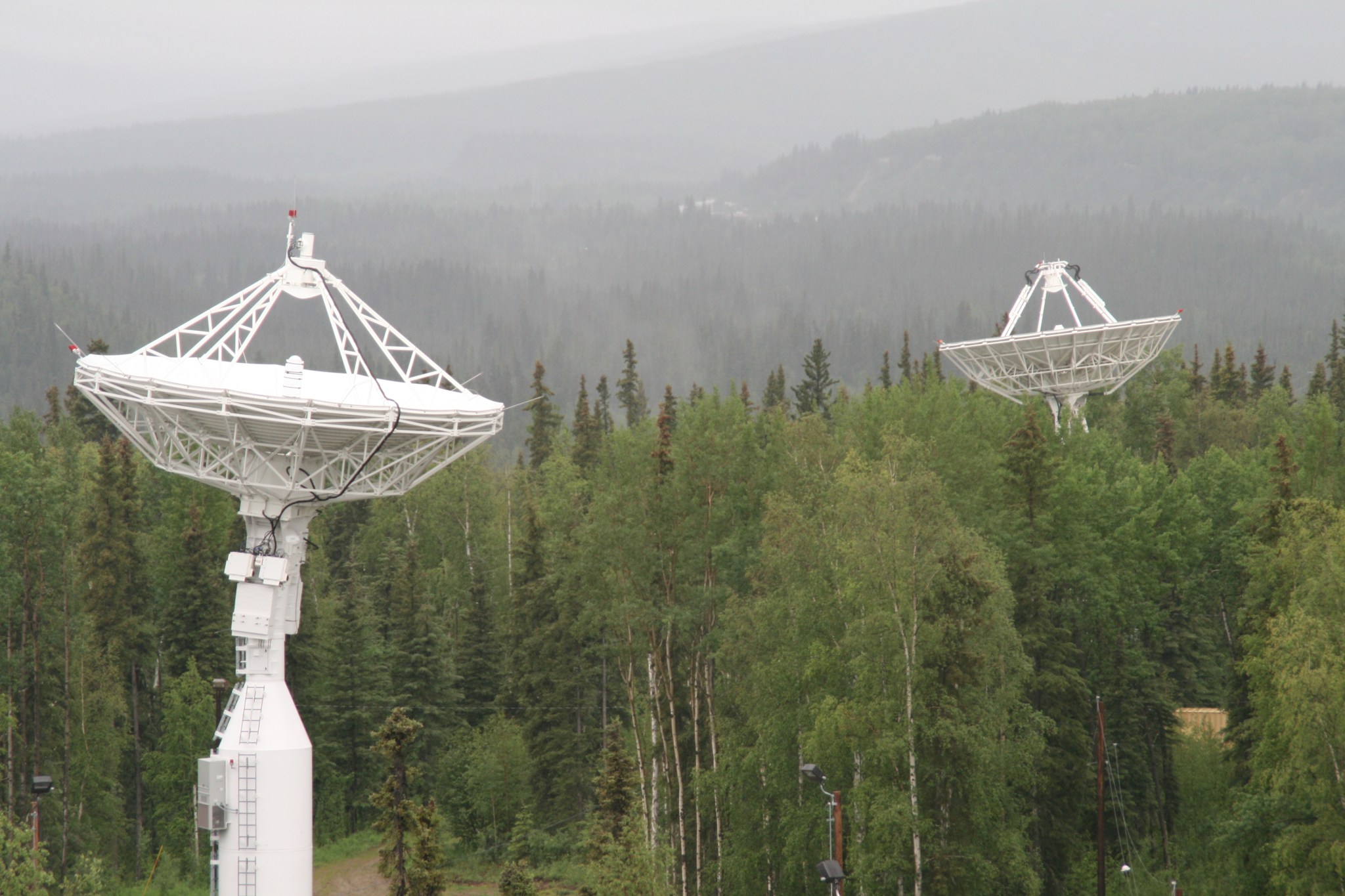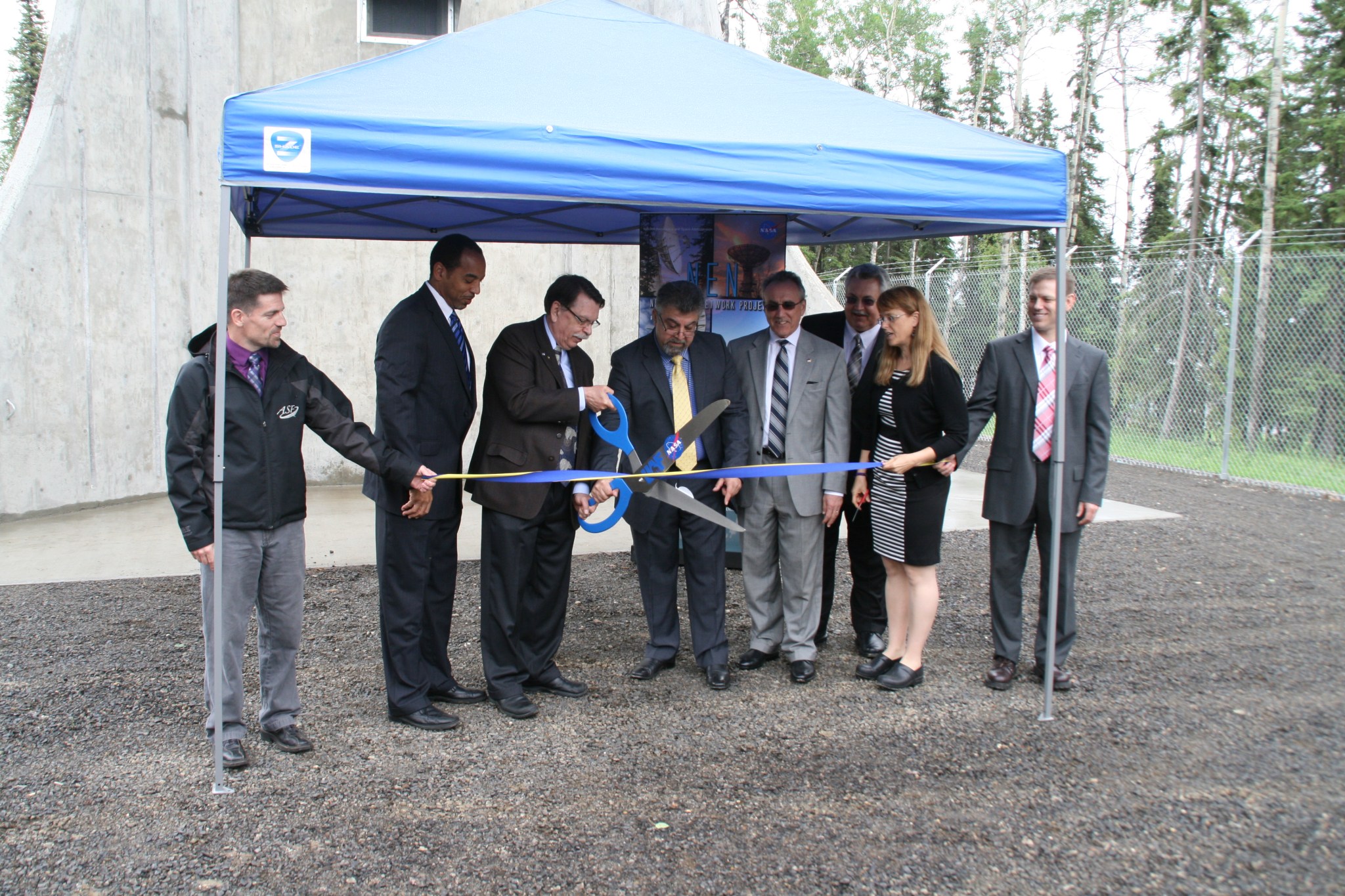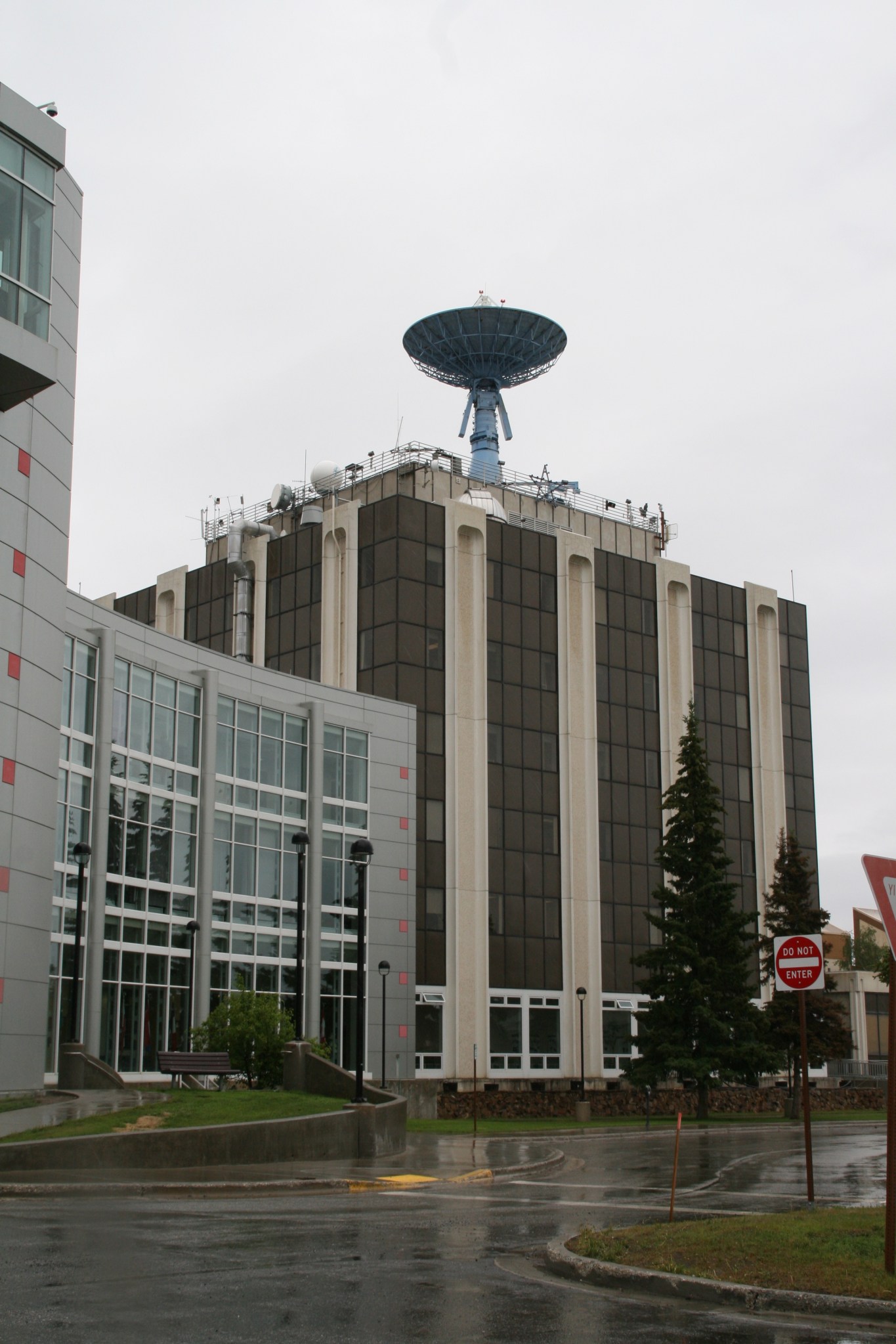
A ribbon-cutting ceremony near the base of the new NASA antenna within the Alaska Satellite Facility (ASF) marked the official beginning for the Near Earth Network asset. Operated by the University of Alaska, Fairbanks (UAF), the facility is a prime polar location for NASA and part of its globally distributing ground-based network providing communication services for orbiting spacecraft.
“You call this area the final frontier,” said Badri Younes, deputy associate administrator for Space Communications and Navigation (SCaN) to the Fairbanks crowd gathered for the ceremony. “At NASA, we see you as the first frontier because you are at the forefront of exploration activities. To everyone who worked to make this a reality, thank you. You have a special relationship with NASA, and we want to continue working with the university to expand this relationship.”
Operation of the NASA-owned communication equipment, consisting of three antennas (AS-1, 2 & 3), is the responsibility of the university. The 24-hour-a-day, seven-day-a-week services provide downlink, uplink and coherent tracking to support launches, early orbits and routine on-orbit operations. Development, building and verification testing of NASA’s newest antenna were completed just in time to support the launch of the Orbiting Carbon Observatory (OCO-2) on July 2.
With AS-3 in operation, the network’s capabilities have expanded. “From the beginning of this project the university has been very supportive,” said David Carter, project manager. “The entire team did a great job, especially with the challenges of the arctic weather to complete site preparations, antenna installation and site acceptance testing. This addition will allow NASA to expand its networking capabilities, providing more flexibility in support of current and future missions.”

The partnership between NASA and the university began more than 20 years ago with the installation of NASA’s first antenna at the site. “To see the number of people here today shows the enthusiasm we have for this partnership,” said Brian Rogers, UAF chancellor. “Thanks to all of you for being here, thanks to NASA for continuing this partnership and for caring about the growth of science, technology, engineering and mathematics.”
The NEN provides telemetry, tracking and command (TT&C) services to an extensive and diverse customer base of approximately 35 missions. They include the high-rate Earth Observing System (EOS), Aqua, Aura and QuikSCAT; and Small Explorer (SMEX) missions such as SWIFT, AIM, IRIS and NuStar. The network provides TT&C services for orbiting satellites with periodic passes that average 140 per day. The network also supports orbiting satellites through short duration communications services. These missions require daily and sometimes hourly contact.
Comprised of NASA-owned and commercial tracking stations, the network is located throughout the world. Network assets owned by NASA are located at Wallops Flight Facility in Virginia; McMurdo Ground Station in Antarctica; White Sands Complex, in New Mexico; and owned by NASA, but operated by UAF is the Fairbanks facility.

NASA’s Space Communications and Navigation Program, part of the Human Exploration and Operations Mission Directorate at the agency’s Headquarters in Washington, is responsible for all of NASA’s space communication activities. The Near Space Network is managed, operated, and maintained at the Goddard Space Flight Center. Team members are located at the Greenbelt and the Wallops Flight Facility campuses.
The network is currently augmenting its ground station network to provide communication services for future spacecraft. Future users will include NASA’s newest heavy lift vehicle, the Space Launch System (SLS) and the Orion Multi-Purpose Crew Vehicle (MPCV).
By Dewayne Washington
NASA’s Goddard Space Flight Center

























